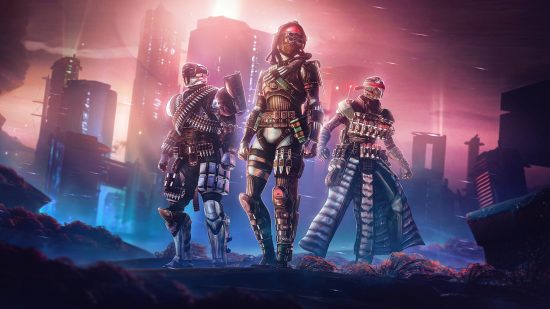Following several PlayStation leaks over recent months, slides allegedly from a 2022 Data Strategy and Operations Analytics have now emerged. This presentation shines a light on revenue and player engagement statistics that explain Sony’s live service obsession for PS5 and beyond. With The Last of Us multiplayer now canned, Bungie’s Marathon and Destiny 2 experiencing hold-ups, and word of a multiplayer Horizon game, these stats are more important than ever to understand why Sony’s initial live service plans were so ambitious.
Sony has consistently delivered top-tier single-player PS5 games ever since launch with the likes of God of War Ragnarok and Marvel’s Spider-Man 2 being among the best games of recent times, regardless of the platform. However, as the information that emerged from last month’s Insomniac ransomware attack highlighted, ballooning AAA videogame budgets have pushed Sony towards padding out its live service portfolio, particularly by acquiring Destiny 2 developer Bungie. Though it’s not quite got the running start Sony would have liked, with multiple delayed and canceled projects – leaving top studio Naughty Dog in danger of missing the boat with the PS5 generation – these stats showcase why PlayStation has made this shift.
These leaked Sony documents from 2022 offer insight into the revenue distribution of AAA action-adventure, fighting games, and live service titles across PlayStation. Given Sony’s current reliance on (albeit stellar) big-budget action-adventure games like God of War, Horizon, Uncharted, and Days Gone, which make 97% of their revenue through initial game sales around launch, these titles need to hit the mark. If one were to significantly underperform, it would be disastrous. With this in mind, Sony undoubtedly took Destiny 2’s 62% of revenue generated by in-game spending and Rainbow Six Siege’s 56% to heart.

By their very nature, the long-term success of live service games gives way to much larger, more consistent long-term profits that aren’t so make-or-break as Sony’s single-player blockbuster core. Call of Duty Warzone and GTA 5 Online, for example, generate above-average revenue compared to PS4 and PS5 exclusives as a result of the greater post-launch content and microtransactions that drive player spending. Outside of the live service scene, it’s almost unheard of for a game to increase in revenue years after release.
As one slide notes, “Live Services games encourage players to have multiple transactions”, with a 10% conversion rate for players making their first additional purchase in CoD Warzone, 16% for Destiny 2, and 14% for Apex Legends. From here, it’s revealed that it’s not uncommon for players to make significantly more in-game purchases after their first taste. In HoYoverse’s gacha Genshin Impact, for example, a staggering 48% of those who spend money on in-game purchases made over 16 transactions, while GTA 5 stands at 24%. When compared to fighting games, an exceptionally popular genre referenced throughout these documents, it’s remarkable how common making numerous purchases is in live service titles.
It’s also a surprisingly quick turnaround, as another slide notes. According to the documents, FIFA 22 generated 66% of its in-game transactions during its first month, while this stat stood at 96% for FIFA 23 (although this stat appears to be somewhat skewed due to when this presentation would have been made, which would have been very early on in FIFA 23’s life cycle). This doesn’t dwindle much over time either, with 30% of Apex Legends’ and 31% of Warzone’s transactions occurring two years after launch. Many of these popular live service games also have a very short average grace period between transactions. In Genshin Impact, players average out at roughly 22 days between each in-game transaction, while Warzone sits at 55 days, and Apex Legends and GTA 5 hold 83 days.

With its blockbuster bubble at risk of collapsing as budgets begin to outpace the growth of sales, it’s clear where Sony’s live service obsession for the PS5 and the future of PlayStation comes from. It’s hard to deny that popular titles like Apex, Warzone, Destiny, GTA Online, and Overwatch, aren’t incredibly successful, even during dry periods. Plus, with PlayStation’s monthly active users being equal to the population of Japan, there’s certainly scope for a long-term money-printer for Sony. However, this document oddly fails to cover the continued costs involved in making live service titles to begin with.
As the wave of layoffs at Bungie and the cancellation of Naughty Dog’s The Last of Us Online show, it takes the full dedication of a studio to keep such an ambitious project going, let alone profitable. With more and more live service games popping up and shortly dying, such as Babylon’s Fall, Knockout City, and Hyenas, it’s becoming apparent that players aren’t necessarily interested in more games constantly demanding their attention.
It’s not surprising to see Sony now pulling back on some of its live service ambitions, such as the aforementioned cancellation of The Last of Us Online and delays across many of its planned games. Despite that, there are still many great new PS5 games to look forward to, including the haunting hidden gem Pacific Drive and a strong collection of the best PS5 games waiting for you. Otherwise, find out how PS Plus added 251 games worth up to $8,000 in 2023 following our deep dive into the stats.
